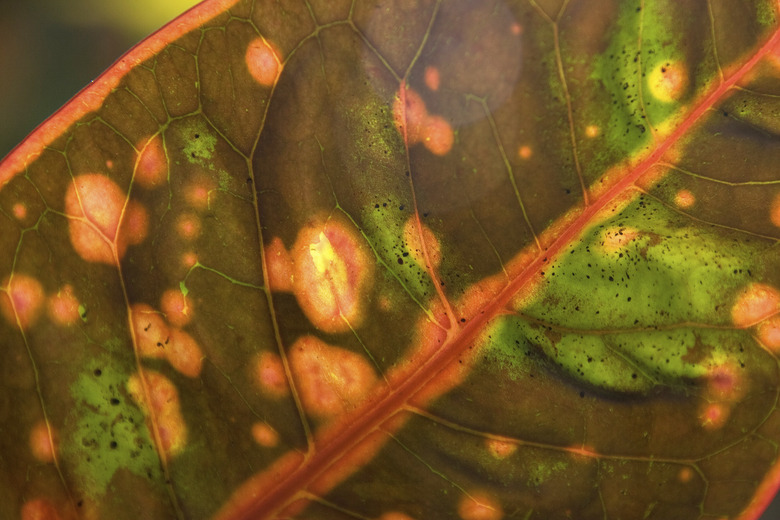How To Troubleshoot White Spots On Shrubs
Things Needed
- Ready-to-use fungicide spray
- Handheld magnifying glass (optional)
- Garden hose
- Soft toothbrush
- Horticultural oil
- Yellow sticky cards
Tip
To treat powdery mildew organically, add 1 teaspoon baking soda and a few drops of liquid dish detergent to 1 quart water, and spray plants well on both tops and undersides of leaves. Repeat treatments regularly. When using chemicals, check the label to be certain the product is safe for your specific shrub. Follow label instructions for your shrub closely.
Warning
Always wear gloves, long sleeves, protective clothing and protective eyewear whenever you work with chemicals or prune. When pruning infected plants, always sterilize your pruning shears or scissors with household disinfectant after each cut prevent cross-contamination.
White spots on the leaves of your shrubs are not caused by any one pest or disease; they can indicate a number of conditions. To treat the symptoms, you must first identify the cause. A little detective work — noting the size and shape of the spots, the type of shrub they are on, and whether the spots are accompanied by any other clues — can pay off in a correct diagnosis. Quick identification and prompt treatment are vital in controlling pests and diseases, so the quicker you break out your magnifying glass, the quicker you can get your shrubs back on the road to health.
Step 1
Take a closer look at the white spots to identify their characteristics. A magnifying glass can help. If the spots take the form of irregular whitish or grayish patches, or a grayish-white dusting over the entire plant, the cause could be powdery mildew. To treat, remove and destroy dead leaves, improve air circulation and available light with proper pruning, and spray with a ready-to-use fungicide. Spray all the plant surfaces thoroughly, and repeat every seven days.
Step 2
Inspect the undersides of white-speckled leaves, using your magnifying glass, for the presence of spider mites, tiny reddish-brown spiders that cause a white stippling on foliage. Other clues to spider mite infestation include grayish, cottony webs on the undersides of leaves, and foliage that becomes pale and then dies. Spray affected plants with forceful jets from a hose — since mites can neither fly nor swim, this technique drowns them.
Step 3
Inspect to see if the white spots resemble foamy-looking blobs. If so, you probably have spittlebugs. Either remove them with a gloved hand, or knock them off by vigorously spraying the bush with water.
Step 4
Scrape a white spot with your fingernail to determine if it is difficult to dislodge. If so, and if the spot is roundish to oval, your problem may be scale. These soft-bodied insects about 1/8 inch long that feed under leaves. Scale infestations can be difficult to eradicate because of the insect's protective scale. To treat, scrub scale off with a toothbrush, or use horticultural oil. Application rates for oil vary from plant to plant and season to season. For most shrubs, mix 5 to 7 tablespoons of oil with 1 gallon of water for dormant treatments. In summer, mix 2 to 5 tablespoons of oil with 1 gallon water. Spray until the affected areas are thoroughly wet.
Step 5
Examine plants for sticky substance on leaves and stems, and look for ants. Along with tiny, bright white cottony balls on leaves, these signs point to mealybugs, which excrete a liquid called honeydew. Aside from being a magnet for ants, which feed on it, honeydew causes sooty mold. Mealybugs themselves can cause distorted plant growth and leaf drop. Control them with yellow sticky cards and superior-quality horticultural oil applied in the same manner used for scale.
